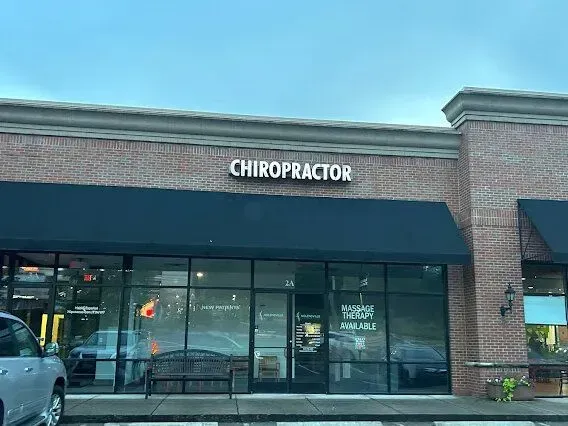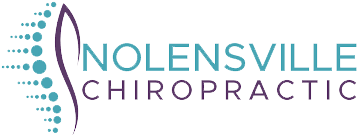Blog

Car accidents happen quickly, but the effects can last for weeks, months, or even years if they are not addressed properly. One of the most common injuries following an accident is whiplash. Even a minor fender bender can jolt your neck and spine hard enough to cause lasting pain. While some people think the soreness will go away on its own, ignoring whiplash can lead to chronic problems that affect your quality of life. Chiropractic care provides a safe, effective way to treat whiplash and get you back on track. Whiplash occurs when your head is suddenly forced forward and backward, straining the muscles, ligaments, and joints in your neck. This rapid movement stretches tissues beyond their normal range of motion, leaving you with pain, stiffness, headaches, and sometimes dizziness or tingling in your arms. The tricky part is that symptoms do not always show up right away. You might feel fine immediately after an accident, only to wake up days later with neck pain that makes it difficult to turn your head. At Nolensville Chiropractic, we see patients who have gone weeks or even months before seeking care after an accident. By that point, their body has started to adapt to the injury, often in unhealthy ways. Muscles may tighten to protect the injured area, joints may become restricted, and the spine may shift out of alignment. These changes create more stress on your body, setting the stage for long-term pain. That is why early treatment is so important. The sooner you address whiplash, the better your chances of a full recovery. Chiropractic adjustments play a key role in whiplash treatment because they focus on restoring alignment and mobility to the spine. When the vertebrae in your neck are misaligned from the impact, the surrounding muscles work harder to compensate. Adjustments gently correct those misalignments, relieving pressure and allowing your body to heal more efficiently. Patients often notice not only reduced pain but also improved range of motion, making it easier to go about daily activities. Beyond adjustments, we use other therapies that support whiplash recovery. Muscle stimulation, traction, and laser therapy are often recommended to reduce inflammation, relax tight muscles, and speed healing. Each patient’s care plan is customized to their specific injury, because no two accidents are the same. Whether you are dealing with a mild case of stiffness or severe pain, the goal is always the same: to restore your body’s natural balance and function. One of the most important things to understand about whiplash is that rest alone is not enough. While taking it easy for a few days can help, your spine and muscles need active care to fully recover. Without it, scar tissue may form, limiting mobility and causing lingering pain. Chiropractic care helps prevent that outcome by keeping the spine moving properly during the healing process. This not only relieves discomfort but also reduces the risk of future issues. Another common concern after a car accident is headaches. Many patients with whiplash report persistent tension headaches or migraines that were not a problem before the crash. These headaches are often linked to misalignments in the cervical spine and tension in the neck muscles. By correcting those misalignments and relieving muscle strain, chiropractic care can significantly reduce or even eliminate post-accident headaches. It is also worth mentioning the emotional toll of an accident. Pain and stiffness can disrupt sleep, limit your ability to work, and make even simple tasks stressful. This creates a cycle of frustration that slows recovery. Chiropractic care helps break that cycle by addressing the physical issues causing your discomfort. When your body feels better, your stress levels go down, and your recovery becomes much smoother. If you have been in a car accident, even a minor one, it is smart to schedule an evaluation with a chiropractor. Injuries like whiplash may not be obvious at first, but catching them early makes a big difference. At Nolensville Chiropractic, we start with a thorough exam and imaging when needed to identify exactly what is going on in your spine and muscles. From there, we create a personalized plan to help you heal quickly and completely. Patients often tell us that chiropractic care not only relieved their accident-related pain but also left them feeling stronger and more resilient than before. That is because chiropractic care does more than just patch up injuries—it helps your body function at its best. Once you are aligned and your nervous system is working properly, you may notice improvements in your overall energy, sleep, and mobility. You do not have to live with the lingering effects of whiplash. If you or someone you know has been in a car accident, do not wait for the pain to get worse. Take control of your recovery now by contacting Nolensville Chiropractic. We are here to provide gentle, effective care that gets to the root of the problem, not just the symptoms. Every day you delay treatment is another day your body has to work harder to adapt to injury. Give yourself the best chance at a full recovery. Call Nolensville Chiropractic today and schedule your appointment. Let us help you move forward with less pain, better mobility, and the confidence that your body is healing the way it should.

Everyone deals with stress. It shows up at work, at home, and in day-to-day responsibilities. While most people think of stress as something that only affects their mind or emotions, it has a powerful effect on the body too. One of the areas where stress shows up most clearly is the spine. If you have ever noticed your shoulders tightening when you are under pressure, or a stiff neck after a long, stressful day, you have already experienced how stress and your spine are connected. At Nolensville Chiropractic, we see patients every day who come in with back or neck pain that is closely tied to the amount of stress in their lives. They may think it is just part of getting older or working long hours, but often the real issue is how their body is carrying stress. Once stress patterns are released and the spine is aligned, their discomfort improves and so does their overall sense of well-being. So how exactly does stress affect the spine? When your body perceives stress, your muscles respond by tightening. This is a natural protective mechanism, often referred to as the “fight or flight” response. While it is helpful in short bursts, chronic stress means those muscles stay tight much longer than they should. Over time, that constant tension pulls your spine out of alignment, creating pain and stiffness. The longer the pattern continues, the harder it becomes to relax, and the more discomfort you feel. Stress also impacts the nervous system, which runs through the spine. When your nervous system is constantly in a state of alert, it sends signals that keep your muscles braced and your body on edge. This not only increases pain but also interferes with sleep, digestion, and focus. A misaligned spine adds to the problem by irritating nerves and making it harder for the body to return to a calm, balanced state. Many people notice that stress tends to target the same areas repeatedly. For some, it shows up as tension in the neck and shoulders. For others, it creates tightness in the lower back. Wherever it appears, the cycle is the same: stress tightens the muscles, the muscles pull on the spine, misalignments form, and pain increases. Without breaking that cycle, the stress keeps building. Chiropractic care is one of the most effective ways to interrupt that pattern. By adjusting the spine, we reduce the tension and realign the body. This allows the nervous system to calm down, which in turn lowers the stress response. Many patients report that after an adjustment, they not only feel less pain but also feel lighter, calmer, and more able to handle their daily challenges. Beyond adjustments, chiropractic care helps your body become more resilient to stress in the future. When your spine is aligned, your muscles do not have to work overtime to compensate for misalignments. That means less tension builds up when stress does hit. It also improves circulation, which helps your body process stress hormones more efficiently. The result is that you bounce back more quickly instead of staying stuck in that tense, uncomfortable state. Lifestyle habits also play a role in how stress affects your spine. Poor posture, long hours at a desk, lack of exercise, and even dehydration can make your body more vulnerable to stress. At Nolensville Chiropractic, we talk with patients about these habits and give them practical tools to manage stress outside of the office. Simple steps like stretching during the day, practicing deep breathing, and staying hydrated can make a big difference when combined with regular chiropractic adjustments. Another key factor is sleep. Stress often interferes with sleep, and poor sleep increases stress—it is a vicious cycle. Misalignments in the spine make it harder to get comfortable and may even contribute to sleep problems like restlessness or waking up frequently. By correcting those misalignments, chiropractic care helps improve sleep quality. Better rest means your body has more resources to manage stress during the day. One of the most rewarding things we hear from patients is that chiropractic care gives them a sense of control over their stress. Instead of feeling like they are stuck with constant tension and discomfort, they discover that their body can feel better and handle challenges more easily. That shift not only improves their physical health but also boosts their confidence and peace of mind. If you are dealing with stress that seems to live in your shoulders, neck, or back, you do not have to accept it as normal. Stress may be a part of life, but constant tension and pain do not have to be. Chiropractic care provides a natural, noninvasive way to release stress, restore alignment, and support your body’s ability to adapt. At Nolensville Chiropractic, our goal is to help you feel better physically and mentally. We understand that stress will never completely go away, but with the right care, your body can stay balanced and strong in the face of it. If you are ready to break the cycle of stress and discomfort, schedule an appointment today. Let us help you discover how much better life can feel when your spine is aligned and your body is able to handle stress with ease.

When most people think about chiropractic care, they picture adults coming in for back pain, neck stiffness, or injuries from work or sports. What often surprises parents is that chiropractic care can also be a safe and effective option for children. Kids go through rapid growth, constant activity, and plenty of bumps and falls along the way. Their bodies are resilient, but that does not mean stress on their spine and nervous system should be ignored. Just like adults, children benefit from having their bodies aligned and their nervous system functioning properly. At Nolensville Chiropractic, we see families who want their children to grow and thrive without being held back by issues that can develop from misalignments. Parents bring their kids in for many different reasons, from supporting healthy development to addressing specific concerns like posture, sports injuries, or even trouble sleeping. The truth is, chiropractic care is not just about fixing pain. It is about setting the stage for a lifetime of wellness, and kids who start early often build strong foundations for their health. One of the first times chiropractic care can help is during infancy. Birth, whether natural or through a C-section, puts a lot of stress on a baby’s neck and spine. Even a smooth delivery can cause small misalignments that affect how a baby moves, feeds, or sleeps. Gentle chiropractic adjustments designed for infants can help ease that stress and give their nervous system the best chance to develop without interference. Parents often report improvements in colic, better nursing, and calmer sleep patterns after their baby begins care. As children grow into toddlers, their world opens up. They are walking, climbing, running, and exploring everything around them. All of that activity is healthy, but it also means they are taking plenty of tumbles. Small falls may not seem serious, but over time they can create misalignments in the spine. These misalignments can affect balance, coordination, and even immune function. A chiropractor helps keep their body aligned so they can keep moving freely without those issues piling up. By the time kids reach school age, posture becomes a bigger factor. Long hours sitting in classrooms, carrying heavy backpacks, and looking down at screens take a toll. Poor posture can set the stage for back pain, headaches, and fatigue, even at a young age. Chiropractic adjustments help correct posture before it becomes a long-term problem, and regular check-ins can prevent those habits from creating lasting issues. Sports are another reason parents choose chiropractic care for their kids. Whether it is soccer, basketball, gymnastics, or football, sports put unique stress on young bodies. Injuries like sprains, strains, or joint pain are common, but even without a serious injury, repetitive motions can create imbalances. Adjustments keep kids’ spines aligned, improve flexibility, and support faster recovery after practices and games. Many parents notice that their young athletes not only feel better but also perform better when they are under regular care. One of the most overlooked benefits of chiropractic care for kids is its effect on the nervous system. The spine protects the nerves that control every part of the body, including digestion, sleep, and immunity. When the spine is misaligned, those signals can get interrupted, which may show up in ways that parents do not always connect with spinal health. Things like frequent ear infections, stomach discomfort, or difficulty concentrating can sometimes be linked back to nervous system stress. By relieving that interference, chiropractic adjustments help the body function more smoothly, which often means fewer of those recurring issues. At Nolensville Chiropractic, we always tailor our approach to each child. Pediatric adjustments are very different from adult adjustments. They are extremely gentle, often using only the amount of pressure you would use to test the ripeness of a tomato. Parents are usually surprised by how calm and comfortable their children are during a session. The goal is not to force the body but to encourage it into proper alignment so that natural healing can occur. We also spend time teaching kids and parents about healthy habits that support chiropractic care. Things like proper posture when using screens, how to carry a backpack safely, or simple stretches can make a huge difference in preventing problems. The combination of adjustments and education gives kids the tools they need to grow up healthier and more resilient. Parents often tell us they notice changes in their children’s overall mood and energy levels once they start care. Kids may sleep more soundly, focus better at school, or simply seem more comfortable in their bodies. These improvements ripple out into the whole family, making daily routines easier and less stressful. If you are a parent who has been wondering whether chiropractic care could help your child, the answer is yes. Whether your child is an infant, an active grade-schooler, or a teenager balancing sports and academics, chiropractic care offers a safe, natural way to support their health. It is not about treating disease but about giving their body the best possible environment to grow strong, balanced, and healthy. You do not have to wait for your child to be in pain to take action. Chiropractic care is preventive, and starting early gives your child an advantage that can last a lifetime. At Nolensville Chiropractic, we are committed to helping families in our community thrive. If you are ready to see what chiropractic care can do for your child, we invite you to schedule an appointment today. Healthy kids grow into healthy adults, and the steps you take now can shape their future well-being. Call Nolensville Chiropractic, and let us help you give your child the gift of alignment, balance, and better health.

Whether you are a weekend jogger, a high school athlete, or someone who just enjoys staying active, you know how frustrating injuries can be. Nothing derails progress faster than being sidelined by pain. Sprains, strains, and overuse injuries happen more often than most people realize, and once they do, recovery can take weeks or even months. The good news is many of these injuries are preventable, and chiropractic care can play a key role in keeping your body healthy, resilient, and ready to perform. At Nolensville Chiropractic, we see athletes of all levels who come to us with injuries that could have been avoided with proper spinal alignment and proactive care. Chiropractic adjustments are not just about helping you recover after something goes wrong. They are about creating a stronger foundation for movement, reducing your risk of injury before it even happens. So how exactly do adjustments help prevent sports injuries? It starts with alignment. When your spine is aligned, your muscles and joints can work the way they are supposed to. Misalignments create uneven pressure that forces certain muscles to work harder than others, which leads to imbalances. Those imbalances increase your risk of pulled muscles, joint pain, and repetitive stress injuries. By correcting alignment, chiropractic care ensures your body is moving efficiently, reducing strain and lowering the likelihood of injury. Another important factor is flexibility. Tight muscles and restricted joints are common in athletes, especially those who repeat the same motions over and over. Think about a baseball pitcher throwing hundreds of pitches, or a runner logging miles on the same route. These repetitive motions create stress on the same muscles and joints, limiting their flexibility and increasing the risk of injury. Chiropractic adjustments restore mobility in the joints and help muscles relax, allowing for greater flexibility. That improved range of motion is one of the best defenses against injury. Nerve communication is another key piece of the puzzle. Your brain sends signals to your muscles through the nervous system, and those signals control coordination, balance, and reaction time. If there is irritation in the spine interfering with those signals, your body does not respond as quickly or accurately. In sports, even a small delay in reaction time can be the difference between a clean movement and a pulled muscle. Chiropractic adjustments remove that interference, helping your nervous system work at its best so you can move with precision and confidence. Chiropractic care also plays a role in recovery, which is directly tied to injury prevention. After a tough workout or competition, your body needs time to repair. If recovery is delayed, you are more likely to get hurt the next time you train. Adjustments help speed up recovery by improving circulation, reducing inflammation, and calming muscle tension. That means you bounce back faster and lower your risk of overtraining injuries. Many professional athletes rely on chiropractic care as part of their training routine, not just because it feels good but because it keeps them in the game. From football players to marathon runners, athletes understand that their performance depends on their body functioning at its highest level. You may not be competing on a professional stage, but the same principles apply. If you want to stay active without being sidelined, chiropractic care should be part of your routine. At Nolensville Chiropractic, we tailor our care to your specific sport, activity level, and goals. A runner may need adjustments that focus on the hips and lower back, while a tennis player may need more attention on the shoulders and neck. We also look at your posture and movement patterns to identify where you may be at risk for future injuries. By correcting those issues early, we help you stay ahead of the problem instead of waiting until pain forces you to act. One of the most rewarding parts of what we do is watching patients rediscover the activities they love without fear of injury. Someone who once had constant knee pain finds they can run again comfortably. A golfer notices that not only do they feel better but their swing improves too. These results happen because the body works best when it is balanced, aligned, and free from unnecessary stress. You do not have to accept injuries as part of an active lifestyle. With the right care, you can minimize your risk and enjoy your favorite activities with confidence. Think about how much more consistent your workouts could be if you were not dealing with nagging pain. Imagine pushing yourself a little harder in your sport without the constant worry of tweaking something. That is what preventive chiropractic care can offer. If you want to protect your body, improve your performance, and stay injury-free, Nolensville Chiropractic is here to help. Our approach is not a one-size-fits-all plan. We listen to your needs, evaluate your body, and create a care plan that supports your activity level. Whether you are training for a race, playing on a team, or simply want to stay active and healthy, we can give you the tools to keep moving forward. Now is the time to take action before an injury sets you back. Schedule an appointment with Nolensville Chiropractic and see how regular adjustments can keep you strong, balanced, and ready for whatever your sport throws your way.

Most people think of posture as something that only affects the way they look or how their back feels. Maybe you have been told to sit up straight in school or noticed that long hours at the desk leave your shoulders rounded forward. While posture certainly plays a role in muscle and joint comfort, it also has a deeper impact you may not have considered. The way you hold your body influences your digestive system. If you have ever struggled with bloating, heartburn, or sluggish digestion, poor posture may be part of the problem. When you sit or stand with your spine out of alignment, your internal organs do not have the space they need to work efficiently. Slouching compresses the abdomen, putting pressure on your stomach and intestines. That pressure can slow down the movement of food through the digestive tract, which leads to discomfort and digestive issues. Poor posture can also interfere with nerve communication between your brain and your digestive system, since the nerves that regulate digestion travel through the spinal column. When those nerves are irritated, the signals that control processes like stomach acid production or intestinal movement may not function properly. At Nolensville Chiropractic, we see patients every day who come in for back or neck pain but also report digestive concerns. Once they start addressing their spinal alignment, many are surprised to notice improvements not only in how they feel physically but also in how their digestion works. This connection is not accidental. The spine and digestive system are closely linked, and restoring balance in one can relieve stress on the other. Think about what happens when you hunch forward after a meal. That bent position puts direct pressure on your stomach, often leading to acid reflux or a heavy, bloated feeling. Now imagine if you are spending hours every day sitting at a desk, driving, or even scrolling on your phone with your neck craned down. Over time, those positions become your normal posture. That means your digestive system is constantly working under pressure. It is no wonder so many people deal with heartburn, indigestion, or irregular bowel movements. Chiropractic adjustments can help restore proper posture by aligning the spine and reducing tension in the surrounding muscles. When your body is in balance, your digestive organs are no longer compressed, and nerve signals flow freely. This creates an environment where your digestive system can function as it was designed to. Patients often describe feeling lighter, less bloated, and more comfortable once their posture begins to improve. Another way posture affects digestion is through the diaphragm, the muscle that controls breathing. When posture is poor, the diaphragm cannot move as effectively. Shallow breathing becomes the default, which reduces oxygen intake and slows circulation. This lack of proper oxygen and blood flow can make digestion sluggish. Improving posture through chiropractic care allows the diaphragm to move more freely, supporting better breathing and circulation. With improved circulation, your digestive organs receive more of the nutrients and oxygen they need to function efficiently. It is also worth considering the role of stress. Many people with poor posture also experience chronic tension, especially in the shoulders and neck. That tension often triggers the body’s stress response, which shifts resources away from digestion. When your nervous system thinks you are in a state of constant stress, it prioritizes survival functions and puts digestion on the back burner. Chiropractic adjustments help calm the nervous system, reducing the stress signals that interfere with digestion. By helping your body move out of “fight or flight” and into “rest and digest,” adjustments set the stage for healthier digestion. At Nolensville Chiropractic, we combine spinal adjustments with education on posture and lifestyle habits. That might mean showing you how to set up your workspace so your spine stays aligned, giving you stretches to open up your chest and shoulders, or coaching you on how to sit and stand in a way that keeps your core engaged. The goal is not only to correct posture during your time in the office but also to help you maintain those improvements in your daily life. The more consistent you are, the more lasting the benefits for your digestion and overall health. Patients are often amazed by the difference small changes in posture make. Something as simple as keeping your head aligned over your shoulders instead of jutting forward can relieve pressure on the nerves that control your stomach and intestines. Aligning your pelvis properly can reduce pressure on the lower digestive organs. These adjustments may seem subtle, but over time they make a huge impact. If you have been dealing with digestive issues, it may be time to look beyond diet and medication. While nutrition and medical care are important, the structure of your body plays a bigger role than most people realize. Chiropractic care provides a natural, noninvasive way to support digestion by addressing the alignment and posture problems that keep your system from working at its best. You do not have to keep living with discomfort after meals, bloating that never seems to go away, or the constant cycle of heartburn. With the right chiropractic approach, you can free your body from the stress that poor posture places on your digestive system. At Nolensville Chiropractic, we are here to help you make that change. Our team takes the time to evaluate your posture, identify misalignments in your spine, and create a personalized plan to support your digestive health alongside your overall wellness. Imagine how much better your days could feel if digestion was smooth and comfortable again. Better posture, improved alignment, and regular chiropractic care can make that your reality. If you are ready to take the next step, reach out to Nolensville Chiropractic and schedule your appointment. Together, we can restore balance to your body and help you finally experience the relief and energy that come with a healthier digestive system.

Sleep is something most of us know we need more of, but for many people getting a solid night’s rest feels like a constant struggle. Tossing and turning, waking up in the middle of the night, or simply feeling unrested in the morning can take a toll on your health, mood, and productivity. If you are tired of being tired, it may be time to look beyond sleep aids and think about what is really going on inside your body. One of the often-overlooked solutions to improving sleep is chiropractic care. When your body is out of alignment, everything from your nervous system to your muscles feels the strain. That stress can show up in the form of back pain, headaches, or tension that makes it difficult to relax. And when your body cannot relax, sleep quality suffers. Chiropractic care helps restore alignment and balance, creating the conditions for deeper, more restorative sleep. At Nolensville Chiropractic, we see patients every week who come in for pain relief and discover that one of the biggest changes they experience is sleeping better. So how does this work? Chiropractic care addresses one of the core systems that affects sleep: your nervous system. When vertebrae in the spine shift out of alignment, they can irritate the nerves and create dysfunction. This irritation can cause pain, but it can also trigger stress responses that keep your body in a state of alertness. You may notice that you feel wired at night, unable to turn your mind off, or that you wake up multiple times even though you are exhausted. By making gentle adjustments to the spine, a chiropractor reduces this irritation, allowing the nervous system to calm down. A calmer nervous system helps your body shift into the rest-and-digest state that is necessary for deep sleep. Beyond the nervous system, adjustments also help relax tense muscles. If you carry stress in your shoulders, neck, or lower back, you already know how uncomfortable it can be to lie down at night. Tight muscles keep you from finding a comfortable sleeping position and can cause you to wake up with aches that disrupt your rest. Chiropractic care works to release this tension so that your body can truly let go when it is time for bed. There is also the issue of pain. Chronic back pain, neck pain, and headaches are among the most common reasons people report trouble sleeping. It is hard to drift off when your body hurts. Many patients find that once their pain levels decrease through regular chiropractic care, they naturally fall asleep more easily and stay asleep longer. Unlike over-the-counter sleep aids or painkillers, chiropractic care does not just mask the problem. It works on the root cause of your discomfort. That means the improvements in sleep can be long-term, not just temporary fixes. But sleep is not only about falling asleep. It is also about staying asleep and reaching the deeper stages of rest that allow your body to heal and recover. Research suggests that chiropractic adjustments can help regulate melatonin, the hormone that controls your sleep-wake cycle. While more studies are ongoing, the results so far are promising and line up with what many patients already experience: better consistency in their sleep patterns once they start care. At Nolensville Chiropractic, we take a personalized approach. Every patient is different, which means every sleep issue is different too. For some, the problem comes from stress and tension that build up during the day. For others, it is a postural issue from sitting at a desk or working long hours on their feet. Still others may be recovering from an injury or dealing with the lingering effects of an accident that makes rest hard to come by. During your first visit, we take the time to listen to your history, understand your lifestyle, and design a care plan that addresses the specific causes behind your poor sleep. One of the things patients often tell us is that they did not even realize how much their sleep was being affected until they started feeling better. They come in because of a stiff neck or nagging lower back pain, and within a few weeks they start saying things like, “I slept through the night for the first time in months” or “I wake up actually feeling rested now.” That transformation has ripple effects throughout their lives. When you sleep better, your energy goes up, your mood improves, your focus sharpens, and even your immune system gets a boost. In short, sleep is the foundation for good health, and chiropractic care helps restore it. Of course, sleep is also influenced by lifestyle habits. We talk with our patients about healthy routines that support chiropractic care, like maintaining good posture, stretching regularly, and being mindful of caffeine and screen time before bed. The difference is that chiropractic care gives you a foundation where those habits can actually work. If your spine and nervous system are under constant stress, all the sleep hygiene in the world may not solve your problem. When your body is aligned and functioning properly, those healthy habits finally start to make an impact. If you are struggling with insomnia or restless nights, ask yourself how long you want to keep dealing with it. Sleep is not something you can put off or push through. Every day you go without rest is another day your body cannot fully recover. Imagine what it would feel like to wake up without that fog, to go through your day without running on empty, and to finally look forward to bedtime because you know your body will get the rest it needs. That is the kind of change we help people experience here at Nolensville Chiropractic. Our goal is not only to get you out of pain but also to help you live with more energy, balance, and vitality. If better sleep is something you have been missing, chiropractic care may be the missing piece you have been looking for. You do not have to settle for restless nights and tired mornings. Take the first step toward better sleep by reaching out to our office today. Whether you are dealing with chronic insomnia, pain-related sleep problems, or just want to improve your overall health, we are here to help. Call Nolensville Chiropractic, schedule an appointment, and let us show you how better alignment leads to better sleep.

If you’re like most people, you probably try to tough it out when your neck or back starts bothering you. You stretch a little, maybe grab a heating pad, or take something over the counter to get through the day. But what happens when the discomfort sticks around or keeps coming back? That’s when a lot of people start wondering if chiropractic care might be the solution they’ve been missing. At Nolensville Chiropractic, we talk to people every week who aren’t sure whether their pain is something a chiropractor can help with. If you’ve been asking yourself that same question, this guide is here to walk you through it. Whether your discomfort just started or it’s been going on for a while, let’s talk about how to tell when it’s time to give chiropractic a serious look. Let’s start with a basic question. What exactly does a chiropractor do? Chiropractic care focuses on the spine, nervous system, and how your body functions as a whole. When joints in the spine or other areas become restricted or misaligned, it can lead to pain, stiffness, and even affect how your body communicates internally. A chiropractor uses hands-on adjustments and other techniques to improve movement in those joints and help your body function more naturally. So how do you know if chiropractic might help with your neck or back pain? Here are some signs to watch for. You wake up with stiffness or soreness in your neck or back more days than not. If mornings start with discomfort, and you have to stretch or slowly ease into your day before you feel like yourself, that’s not something to ignore. Pain that appears first thing in the morning can be a sign that your spine isn’t moving the way it should. Chiropractic adjustments may help restore motion and reduce that morning stiffness. You feel sharp or shooting pain that runs into your shoulders or down your legs. Pain that radiates or travels is often a signal that a nerve might be involved. This can happen when spinal misalignments or disc issues put pressure on nerves in the neck or lower back. Chiropractors are trained to assess these patterns and may be able to relieve that pressure naturally, without medication or surgery. You sit or stand for long periods and feel tension building in your back or neck. Modern life keeps us glued to desks, phones, and devices. All of that screen time and sitting takes a toll. If you notice your posture is off or you feel sore at the end of each workday, it could mean your spine needs support. Chiropractic care can improve how your body handles repetitive daily stress and help you stay ahead of posture-related problems. Your pain keeps returning, even after stretching or other self-care. Sometimes it feels like no matter how much you stretch, rest, or work on posture, the pain always comes back. That cycle is frustrating and exhausting. If you’ve hit a wall with self-care, it might be time for a more targeted approach. Chiropractors look at the root cause, not just the symptoms, and that can make a big difference in your long-term comfort. You notice popping or grinding sounds when you move your neck or back. Occasional popping is common, but when it happens regularly or is paired with pain, it’s worth investigating. These sounds can signal restricted joints or wear and tear that needs attention. A chiropractor can evaluate what’s going on and let you know if an adjustment could help. You’ve been in a car accident or had a fall, even if it was minor. Some injuries don’t show up right away. You might feel fine the day after a fender bender or slip, but then notice tightness or pain days or weeks later. Chiropractors can assess for hidden injuries and provide care that supports your recovery from the inside out. You feel like your body is out of balance or favoring one side. Maybe you always carry your bag on the same shoulder, or you’ve noticed you lean more when walking or sitting. These habits can create uneven wear on your spine and lead to chronic pain over time. Chiropractic adjustments can help restore balance and support a more even distribution of movement and pressure across your body. You’ve tried everything else, but nothing seems to work long term. If you’ve already seen specialists, tried physical therapy, used medication, or done exercises on your own but haven’t gotten relief, it might be time to consider a different approach. Chiropractic care often helps when other methods have only provided temporary relief. You want a natural, drug-free approach to pain management. One of the reasons so many people turn to chiropractic care is because it focuses on helping the body heal naturally. There’s no reliance on medication, injections, or invasive procedures. Instead, the goal is to improve the function of your spine and nervous system so your body can take care of itself the way it was designed to. Now that you’ve seen some of the signs that chiropractic care might help, the next step is getting an evaluation. At Nolensville Chiropractic, we take the time to understand your pain, your lifestyle, and your goals. Every patient starts with a full consultation and evaluation. We’ll talk through what you’re feeling, when it started, what makes it better or worse, and how it’s affecting your life. Then we use our experience and training to identify whether chiropractic care is the right fit for you. We also take a personalized approach. Not every adjustment is the same, and not every patient needs the same type of care. We work with you to create a plan that fits your comfort level and gets results. You won’t find pressure or gimmicks here. What you will find is a team that listens, cares, and uses proven techniques to help your body feel better and move better. If chiropractic care isn’t the best solution for your situation, we’ll tell you that too, and help you explore other options. A lot of people put off seeking help because they think their pain isn’t serious enough, or they assume it will go away on its own. But pain is your body’s way of asking for help. If you’re feeling uncomfortable more days than not, or if pain is starting to affect how you live, sleep, or work, don’t wait. You don’t have to live with constant soreness or ignore signs that something’s not right. Chiropractic care might be the missing piece that helps you feel like yourself again. If you’re ready to find out whether chiropractic can help with your neck or back pain, schedule a consultation with our team at Nolensville Chiropractic. We’re here to answer your questions and help you get back to living the life you love.

Starting something new can feel a little uncertain, especially when it comes to your health. If you’ve been thinking about visiting a chiropractor but you’re not sure what that first visit will be like, you’re not alone. At Nolensville Chiropractic, we meet people every week who are curious, a little nervous, and ready to feel better. This post will walk you through what to expect so you can come in feeling informed and confident. Whether you’re dealing with back pain, neck tension, headaches, or something else entirely, your first appointment is all about understanding what’s going on and figuring out how to help. You don’t need to know much about chiropractic before walking through our doors. We’ll guide you step by step and make sure you feel comfortable the entire time. Let’s start with the basics. When you arrive at the office, you’ll be greeted by our front desk team. They’ll help you complete some brief paperwork to get a sense of your health history, symptoms, and any concerns you want to share. This part helps your chiropractor understand what brought you in and how to tailor the visit to your needs. You’ll never feel rushed. We take time to learn about your lifestyle, how long you’ve been in pain, and what you’ve tried already. After your intake, you’ll meet with one of our chiropractors for a consultation. This conversation is casual and focused on learning more about what’s been bothering you. You can share your story, describe your symptoms, and ask questions. We want to know how your discomfort affects your daily life, how it changes throughout the day, and what your goals are. Once we’ve talked through your concerns, the chiropractor will perform a physical evaluation. This is a gentle, non-invasive process that looks at your posture, range of motion, and alignment. You may be asked to bend, twist, or move in certain directions to help pinpoint areas of stiffness or restriction. In some cases, we may also test your strength, reflexes, or balance. These simple checks give us a better understanding of how your body is functioning. If imaging like X-rays is needed, we’ll explain why and discuss the next steps. Most of the time, we can begin care based on what we find during the evaluation. We don’t rely on unnecessary imaging unless there is a clear reason to take that step. Once the assessment is complete, we’ll walk you through our findings in plain language. You’ll understand what’s happening in your body and how chiropractic care may help. We’ll explain our recommended approach and outline a care plan that makes sense for your goals and your schedule. Every plan is customized. Some patients come in for acute pain relief, while others are interested in long-term wellness care. If you’re comfortable with it, your first adjustment may happen during that same visit. Adjustments are the hands-on part of chiropractic care. They involve applying gentle, controlled force to specific joints to improve movement and reduce discomfort. Despite what you may have seen online, chiropractic adjustments are not forceful or painful. Most people feel a sense of relief right away, or at least notice their body moving more freely. You’ll have time to ask questions before, during, and after the adjustment. We want you to feel at ease and understand what we’re doing every step of the way. Communication is a big part of our approach. After your first adjustment, we’ll talk about what to expect over the next few days. Some people feel immediate improvement. Others notice gradual changes over the course of several visits. You might feel a bit sore afterward, similar to how you’d feel after trying a new workout. That’s normal and usually passes quickly. We’ll also talk about how often you should come in based on your condition and goals. Some patients need a few visits close together to get started. Others spread their visits out over time. We’ll always work with your schedule and make recommendations that are both realistic and helpful. Another thing we often hear from new patients is how surprised they are by how relaxed they feel after their visit. It’s common to walk out feeling lighter, looser, and more aligned. That’s a good sign your body is responding well to care. What we won’t do is pressure you into long-term plans or complicated commitments. We’re here to support your health in a way that fits your lifestyle. Our team focuses on real results, honest care, and building trust. We want you to feel better, move better, and live your life without being held back by pain. If you’re still unsure about chiropractic care, we invite you to schedule a no-obligation consultation. You’ll have a chance to meet us, talk through your concerns, and decide if this path feels right for you. There’s no rush and no pressure, just a team ready to help you take that first step. The first visit is about getting answers, creating a plan, and starting the process of healing. Whether you’ve been living with pain for a while or this is something new, Nolensville Chiropractic is here to help. We’re proud to serve our community and we’re ready when you are. Your first visit might be the beginning of a new chapter in how you feel every day. If you’ve been waiting for the right time, this could be it.

Most people think about visiting a chiropractor only when something feels off. Maybe it’s a sore back after a long weekend or a stiff neck after too many hours at the computer. While chiropractic care is great for relief during those moments, the real magic happens when you make it a regular part of your health routine. At Nolensville Chiropractic, we see the difference consistent care makes every day. People walk in dealing with daily aches and tension, and over time, they walk out feeling stronger, more flexible, and more in tune with their body. Chiropractic is not just for when you’re hurting. It’s for helping your body function at its best, day after day. Let’s talk through some of the biggest benefits of getting adjusted on a regular basis. You may notice better posture without even trying. Life tends to pull us forward. We lean into screens, hunch over phones, and spend long hours at desks. These habits wear on your spine and shoulders. When your body is properly aligned, it’s easier to hold yourself upright without effort. Regular adjustments help reinforce that alignment and support a more natural, balanced posture. You might sleep more soundly. If your body is constantly dealing with tension or discomfort, it’s hard to fully relax at night. Many people who begin chiropractic care report falling asleep faster and waking up less during the night. This has a lot to do with how chiropractic can reduce stress on the nervous system. When your spine is moving well, your body has a better chance of staying calm and regulated. You could notice fewer headaches. Not all headaches are caused by spinal issues, but many are linked to tension in the neck and upper back. Regular chiropractic care helps reduce tightness in those areas and may lessen the frequency and severity of headaches. If you deal with tension headaches or spend a lot of time looking down at devices, chiropractic may be part of the solution. You stay ahead of injury instead of reacting to it. Waiting until you’re in pain to take action puts your body at a disadvantage. Routine adjustments help keep your joints and muscles moving well, which can reduce the chances of pulling something or developing chronic tension. Chiropractic care is a proactive step that supports your mobility before issues set in. You may recover faster from daily wear and tear. Whether you’re a parent lifting kids, an athlete training hard, or someone who works on your feet all day, your body takes a beating. Regular chiropractic adjustments can help you bounce back quicker. They improve blood flow, reduce inflammation, and support the healing process in a natural way. You might notice a boost in your overall energy. When your spine is aligned and your body isn’t fighting stiffness or tension, it takes less effort to get through your day. You’re not constantly adjusting your posture or stretching out sore muscles. That added efficiency often shows up as improved focus, fewer midday slumps, and a general feeling of being more alert. You build awareness of how your body feels and moves. The more you get adjusted, the more in tune you become with your own health. You start to notice when something feels off before it becomes a bigger issue. That awareness is key to preventing problems and keeping yourself in top shape. You support your immune system and digestion. Your spine protects your nervous system, and your nervous system controls almost everything in your body. When your spine moves well, signals flow more freely. Many patients report fewer colds, better digestion, and an overall sense of well-being after regular visits. While chiropractic isn’t a cure-all, it can create an environment where your body works more efficiently. You get time set aside just for your health. Life moves fast, and it’s easy to push your own care to the back of the list. Making regular chiropractic appointments gives you a reason to slow down and check in with your body. That consistency often leads to better long-term health choices in other areas too, like movement, hydration, and sleep. You build a relationship with a care provider who knows your body. At Nolensville Chiropractic, we don’t just see you once and send you on your way. We get to know your habits, your work demands, and your goals. That connection allows us to give better care over time and make adjustments based on how your life evolves. You support long-term joint health. Joints that move regularly are less likely to develop stiffness and degeneration. Think of it like keeping the hinges on a door well-oiled. Regular chiropractic care keeps your spine and joints functioning well, which can reduce discomfort now and possibly prevent bigger problems later. You help your body manage stress more effectively. Stress doesn’t just live in your mind. It shows up physically through tight shoulders, clenched jaws, and stiff necks. When your spine is in proper alignment, it helps the nervous system manage stress better. Patients often say they feel more relaxed and mentally clear after an adjustment, even when they didn’t realize how much stress they were carrying. The best part about regular chiropractic care is that it can be tailored to fit your lifestyle. You don’t have to come in every week if that doesn’t work for you. Maybe it’s once a month or during certain seasons when your body needs more support. We work with you to build a routine that feels doable and delivers real benefits. And if you ever have a flare-up or new concern, you’re not starting from scratch. We already know your body, your history, and what has worked for you in the past. That makes it easier to jump in and help when something unexpected happens. Making chiropractic care a regular part of your wellness routine is one of the simplest ways to invest in how you feel every day. It’s not just about fixing problems. It’s about giving your body what it needs to stay mobile, pain-free, and resilient. If you’ve only experienced chiropractic once or twice in the past, we’d love to show you what consistent care can do for you. At Nolensville Chiropractic, we’re here to support your long-term health and help you feel your best without relying on medications or invasive treatments. Whether you’re new to chiropractic or ready to get back into a routine, now is a great time to prioritize your health. Regular care in a trusted, local setting can make all the difference. Let us help you get there.

When back or neck pain starts to interfere with your daily routine, it’s natural to start looking for ways to manage it. For some, that means reaching for pain medication. Others consider chiropractic care. If you’re in Nolensville and exploring your options, it’s helpful to understand how each approach works and what role they might play in your care plan. Every person experiences pain differently. What works well for one person might not be the right fit for someone else. The key is knowing the different paths available and making an informed decision based on your goals, comfort level, and lifestyle. Pain medication is one of the most common tools used for managing discomfort. Over-the-counter options are widely available and often used to reduce inflammation or block pain signals. Prescription medications may also be recommended in certain cases, especially after surgery or during recovery from injury. These medications can help people continue working, sleeping, or participating in everyday activities by reducing the intensity of their pain. Chiropractic care offers a different type of support. Chiropractors focus on joint function, spinal alignment, and nervous system balance. Many patients visit chiropractors to address areas of tightness, stiffness, or restricted motion in the spine and other joints. Through adjustments and other techniques, chiropractors aim to help the body move more comfortably and efficiently. People choose chiropractic care for many reasons. Some are interested in care that does not rely on medication. Others are looking for support with posture, joint function, or general mobility. During an initial consultation, a chiropractor typically reviews your history, evaluates your posture and movement, and discusses your goals before recommending a care plan. Some individuals use both chiropractic care and medication at different points in their pain journey. The two approaches are not mutually exclusive, and in some cases, people find that a combination of strategies works best for their situation. It’s also worth considering that pain often has multiple contributing factors. Stress, lifestyle habits, posture, sleep quality, and previous injuries can all play a role. A good care plan often takes a broad view of your health, not just one symptom or one treatment type. If you’re exploring options in Nolensville, starting with a conversation can be helpful. Talk to your healthcare provider about what you’re experiencing. Ask questions. Share your concerns and goals. Whether that leads you to chiropractic care, medication, physical therapy, or another path, the most important thing is that it feels right for you. At Nolensville Chiropractic, we believe in listening closely, taking time to understand your needs, and offering care that respects your individual experience. If you have questions about how chiropractic care fits into a broader pain management plan, we’re here to help you explore those answers at your own pace.



